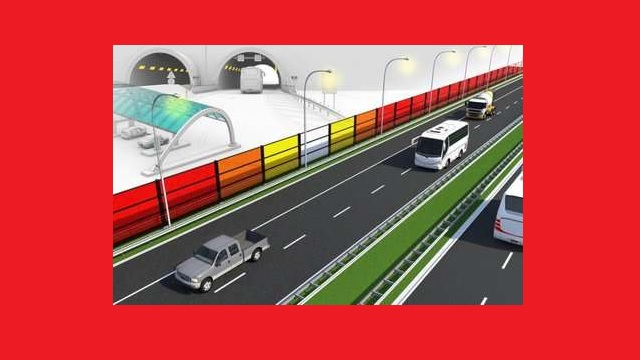Alongside the A2 highway near Den Bosch, The Netherlands, two test noise barriers are installed that generate solar energy. The aim of this practical test, that was officially launched 18 June is to assess the economic and technical feasibility of this form of energy generating noise barriers. Playing a key role in the test are the LSC panels, developed by researcher Michael Debije at TU/e.
On 18 June a one-year practical test started in ‘s-Hertogenbosch, led by the building company Heijmans. The researchers intend to assess the feasibility of generating electricity using solar cells integrated in noise barriers or SONOBs (Solar Noise Barriers). This is the first time in the Netherlands that a practical test of this kind is being carried out at real-life size. The aim is to provide better understanding of how much electricity these semi-transparent acoustic screens can generate under different conditions. Aspects like vandal-resistance and maintenance requirements also form part of the test. Carrying out the test outdoors will allow the researchers to gain valuable data, which they would otherwise not be able to obtain under laboratory conditions.
Each of the two noise barriers used in the practical test is 5 meters wide and 4.5 meters high, and as well as the LSC panels it also contains semi-transparent panels holding classical solar cells, for comparison purposes. The first research results show that 1 km of energy-generating noise barriers can produce enough electricity to supply 50 households with power.
“The Netherlands has enough noise barriers and can also provide the necessary solar cell technology“, says Stijn Verkuilen, project leader at Heijmans. “Our practical test is a simple sum, through which we’re investigating the ways solar cell technology can be integrated in a robust and visually attractive way.”
![]() Explore further: Solar panels released in an array of colors
Explore further: Solar panels released in an array of colors
More information: “Renewable energy: Better luminescent solar panels in prospect” Nature 519, 298–299 (19 March 2015)DOI: 10.1038/519298a


































